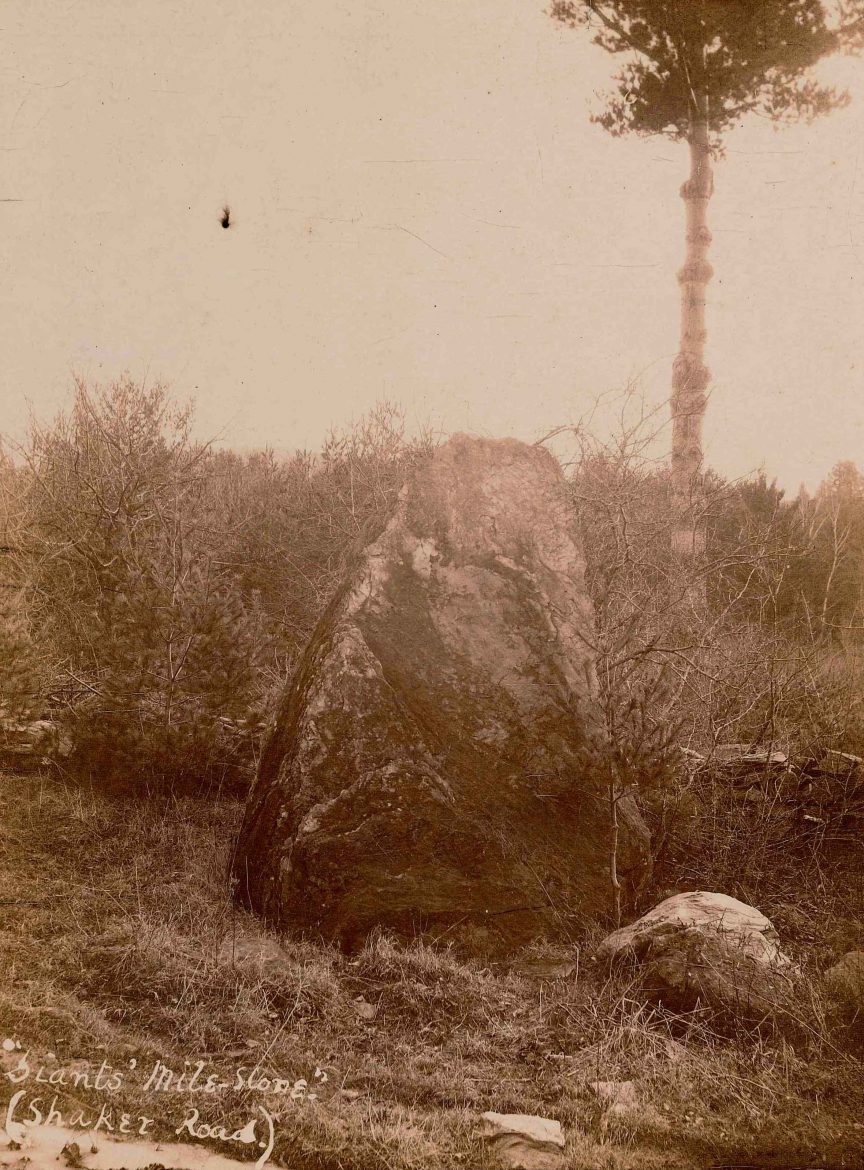
Photograph of the Giants’ Mile Stone, Mount Lebanon, NY, ca. 1905, Shaker Museum | Mount Lebanon, 2016.24194.1
Located along an old road that once ran down the side of the mountain at the Mount Lebanon Shaker Village, is an unusually large stone standing higher than any around it. Although it is now difficult to find a way there, it was a feature that was well known to Shakers and non-Shakers in the 19th […]

Photograph of the Giants’ Mile Stone, Mount Lebanon, NY, ca. 1905, Shaker Museum | Mount Lebanon, 2016.24194.1
Located along an old road that once ran down the side of the mountain at the Mount Lebanon Shaker Village, is an unusually large stone standing higher than any around it. Although it is now difficult to find a way there, it was a feature that was well known to Shakers and non-Shakers in the 19th century. The recently acquired photograph shown here, made by an as yet unidentified photographer, was titled by him or her, the “Giants’ Mile-Stone (Shaker Road).” The early American traveler was accustomed to seeing pieces of stone along the major roads carved with letters and numerals to indicate the number of miles to or from a particular location. While the old Shaker Road would not have had such markers, it did have one extraordinary marker. The Shakers, while we have never seen it referenced in their records, must have shared some sense that this stone was unusual and that it was reminiscent of the common mile markers. When they constructed a stone wall along the south side of the road and easily could have saved considerable labor by incorporating the giant stone into their wall, they chose instead to make a niche leaving the stone standing between the wall and the roadbed for all to see. While the roadbed has nearly totally eroded the stone and wall clearly remain.

Map of Shaker Road and Location of Wall and Giants’ Mile-Stone, Shaker Museum | Mount Lebanon
Beyond the story presented by the photographer and the location of the Shakers’ wall, the stone may have another story. All throughout New England there are examples of special standing stones and other stone structures that many believe are remnants left by those who were here before European explorers and settlers. Standing stones, balanced rocks, perched and rocking boulders, stacked stones, stone chambers, and other apparently non-geologic features dot the landscape for those who know what to look for. Whether stood on its end by glacial actions or by man-powered labor, the Giants’ Mile-Stone is thought to have had some special place in the lives of pre-European inhabitants in the area. Near the end of the last decade Shaker Museum | Mount Lebanon was involved with local historians and interested hikers in exploring the area around the stone and its relationship to the road and to other nearby Shaker features.
For those interested in knowing more about early stone features in the New England landscape we suggest looking at Manitou: The Sacred Landscape of New England’s Native Civilization by James W. Mavor, Jr. and Byron E. Dix published in 1989.
Note that the stone is located on private property and arrangements must be made in advance to see it.